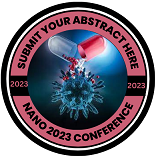Sudip Chatterjee
Regent Education and Research Foundation, India
Title: An attempt to prepare nano sensor material for the detection of propane 2 ol
Biography
Biography: Sudip Chatterjee
Abstract
Air pollution is a major environmental risk to health. Ambient (outdoor) air pollution causes significant health problems which affects everyone irrespective of high, middle, low income countries. In addition to outdoor air pollution, indoor smoke (containing CO, CO2, SO2, water vapour, oil droplets, different kinds of hydrocarbon from volatile organic compounds, chemically active free radicals and so on) from household air pollution is a serious health risk for more than billion people who cook and heat at their homes with biomass fuel and coal. Throughout the world, public concern is growing day by day over industrial impact on the environment. Global air quality monitoring, local air quality monitoring, indoor and outdoor air quality monitoring are now a very common issue.
Global monitoring is also related to the presence of toxic and explosive gases as well as malodours in indoor and outdoor, mostly which are often due to the volatile organic compounds (VOCs). Global monitoring is also related to detection of trace chemicals like greenhouse gases (CO, CO2, CH4, NOx etc). Monitoring and chemical sensing of the presence, identify and degree of severity of the pollutant is growing of importance to implement the laws designed to sustain acceptable and safe standards of air quality. There are varied environmental monitoring techniques available today but present established global environmental monitoring methods are often prolonged, expensive and there are some constraints in sampling and analytical techniques.
To solve these problems the interest has been growing on Electronic Nose (ENOSE) Technology, which has received considerable attention in the field of sensor technology during the past few years, largely due to invention of several applications procured from research in applied science and technology. Electronic nose technology is also reliable, cost effective, speedy and accurate to identify the environmental pollutant. Different prototypes of artificial nose devices have been developed to monitor complex vapour mixture containing some hazardous volatile organic compounds (VOCs) such as methanol, propan-2-ol, acetone, ethylmethylketone, hexane, benzene, xylene.
Artificial electronic noses have been provided with a plethora of benefits in food technology. It can be used as a powerful monitoring method to identify the quality of food control in some of the specific applications. This technology is used to detect the presence of numerous volatile organic compounds like acetone, hexanal, 2-pentanone, toluene, limonene, heptanal etc. which are present in the headspace of food. The concentration of volatile organic compounds (VOCs) not only depend on the nature of the food but also on manufacturing process (an example milk sterilization, pasteurization etc).
Key Words: VOC, ENOSE, Sensor Technology, Nano Sensor

